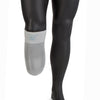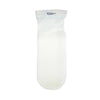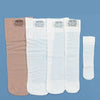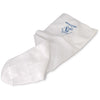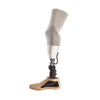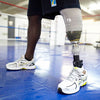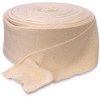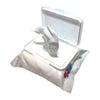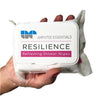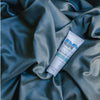How do I deal with friction?
All day long, your prosthesis rubs against your skin. This repetitive socket motion often leads to chapping, chafing, and blisters, friction-related issues that, although common, are always a pain. Any area of the skin where there's friction between you and your socket is at risk for skin breakdown, but wearing a prosthesis doesn't mean you have to slow down. A variety of prosthetic products are designed to provide a barrier of protection between your skin and your prosthetic interface, all while preventing and healing most types of skin irritation caused by friction.
TRY AN ANTI-CHAFING PRODUCT
Anti-chafing products -- generally topical treatments like creams, liquid powders, and body glides -- are designed to protect skin from friction while preventing blisters, rashes, dry skin, and excessive moisture. Made to last all day, anti-chafe products safely penetrate the skin surface to lubricate, moisturize, and heal while allowing skin to breathe.
Topical anti-chafing products are amputee lubricants, designed to help your limb to glide easily into your socket without chafing or skin bunching. Before the liner or prosthetic suspension sleeve is pulled on, they can be applied to fragile skin or anywhere you feel friction between you and your socket. Many above the knee amputees will apply along the inside of their limb just below the groin area where chafing can occur, or around the inside brim of the prosthesis. Below knee amputees should apply to both sides of the tibia, knee cap, fibula head and the back of the knee for relief from rubbing throughout the day.
There are also anti-chafing products designed to be used externally. Adhesive gel squares pressed directly onto the skin moisturize, cushion, soften, and protect the skin against abrasion and shear forces, while prosthetic liner patches simply absorb shear stresses that would otherwise cause skin irritation or ulcers.
Liner patches work particularly well for above knee, below knee, and arm amputees. They're made from two gliding layers of a low friction textile. Those layers work together to counter the shearing forces created by your limb's normal movement inside your socket. A liner patch placed on your knee cap, front tibia bone, side fibula bone, end of your femur and/or the back of your knee can be worn all day under your socks, prosthetic liner, and shrinker for more targeted relief.
PROSTHETIC PRODUCTS:
RESILIENCE LIQUID POWDER, ANTI-FRICTION
GLIDEWEAR PROSTHETIC LINER PATCH
TRY A TARGETED TREATMENT
A targeted treatment (a spot treatment) typically used to treat heat rash and patches of dry skin can also be used as a defense against irritations caused by day-to-day friction related to your prosthetic socket. Some targeted treatments even last longer than anti-chafing creams due to their viscosity and anti-shear ingredients. To shore up your skin’s natural friction fighting defenses, apply a spot treatment to any trouble areas during your daily skin care routine. Gently massage it into affected areas for at least one minute or until your skin feels smooth and non greasy.
PRODUCTS:
ADAPTLABS ADAPTSKIN SKIN OINTMENT
RESILIENCE PROSTHETIC SALVE
Related Articles:
- Alcohol & Skin Care: The Facts
- Do I have a skin disorder?
- How-to create a prosthetic skin care routine?
- How Does Your Skin Work?
- Ingredients To Avoid
- Know Your Skin Type
- Parabens: Are they really a problem?
- The DOs and DON'Ts of Skin Care
- Why are fragrance free products best?
- Why do some skincare products cause a negative reaction?
- Your Residual Limb Deserves Some TLC
- 15 Skin Problems Amputees Experience & How to Solve Them
- Common Skin Issues for Above-Knee Amputees














































